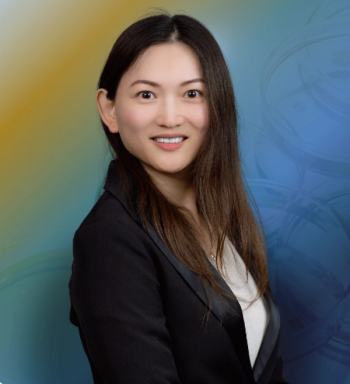
UV Resonance Raman Spectroscopy Analysis of Protein Structure and Folding
UV resonance Raman spectroscopy examines how UV light interacts with the electrons of samples and provides information about their molecular structure and dynamics. Sanford A. Asher, Distinguished Professor of Chemistry at the University of Pittsburgh, is using the technique to study peptide excited states and conformations and protein folding, with the ultimate goal of helping to advance research into the mechanisms of disease. He recently spoke to us about this work.
UV resonance Raman spectroscopy examines how UV light interacts with the electrons of samples and provides information about their molecular structure and dynamics. Sanford A. Asher, Distinguished Professor of Chemistry at the University of Pittsburgh, is using the technique to study peptide excited states and conformations and protein folding, with the ultimate goal of helping to advance research into the mechanisms of disease. He recently spoke to us about this work.
Can you please briefly describe the basics of UV resonance Raman spectroscopy and discuss why it is a useful technique for examining protein and peptide structure?
Raman is a very powerful technique since it monitors the simultaneous coupling of electromagnetic radiation with the electronic charge localized in particular chromophoric groups of molecules, and the coupling of molecular vibrations with that electronic charge that was forced to oscillate by the driving electromagnetic radiation. This second-order coupling is extraordinarily sensitive to molecular structure and environment, giving rise to a very high information content spectroscopy. In addition, there is high selectivity for vibrations of interest since excitation can be localized within specific chromophoric groups in a sample, such as in particular sidechains in specific proteins. There is also high sensitivity due to the increased resonance Raman cross sections for particular vibrations. This enables trace detection methodologies.
Your research involves the study of intrinsically disordered proteins (IDPs) that may be involved in disorders such as Parkinson’s disease, Alzheimer’s disease, and type II diabetes. What is the source of the spectral differences for protein secondary structure (that is, beta sheet versus alpha helix), and how is that information used in your research with these proteins?
Over the last two decades we demonstrated the unique power of deep UV resonance Raman to determine secondary structure of peptides and proteins. Our method is far more informative than circular dichroism (CD) spectroscopy. We easily differentiate alpha helix from beta sheet and from PPII conformations. The information content allows us to also differentiate 310 and pi helices and various turns. This enables us to elucidate the changes in secondary structure of IDPs as they bind their biological targets.
Our most important result is that we can use our spectral data to calculate the secondary Gibbs free energy landscape along, for example, the Ramachandran psi angle folding coordinate. This is the first time that this type of reaction coordinate information was available from experiments.
How can the technique be used in kinetic studies of protein structural changes?
We can use it to follow dynamics such as protein folding and unfolding. In one experiment we excite a water solution of a protein with a 1.9-mm IR pulse that is absorbed by a water vibrational overtone. This energy is thermalized in picoseconds. We can then excite with a delayed UV pulse to monitor how the secondary structure evolves. These dynamic spectra can be analyzed to construct a movie that shows the secondary structure evolution during unfolding. This uncovers the activation barriers so important in structural evolution.
What other spectroscopic techniques have you used in your research with IDPs? How does that information complement the results provided by UV resonance Raman spectroscopy?
We of course utilize all of the standard techniques important in biophysical chemistry. The UV Raman techniques are novel and are motivated and tailored to resolve the existing outstanding questions.
What are the next steps in your research?
We are continuing our biological protein folding investigations and are developing addition sophisticated polarized Raman methodologies. We are also part of a group sending a UV Raman instrument to Mars in 2020. I hear that there is a special one-way fare for spectroscopists for this measurement. We are also pioneering standoff UV Raman instruments for standoff trace explosive detection.
Newsletter
Get essential updates on the latest spectroscopy technologies, regulatory standards, and best practices—subscribe today to Spectroscopy.





